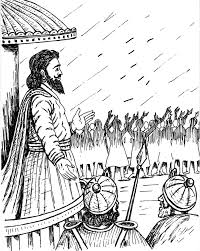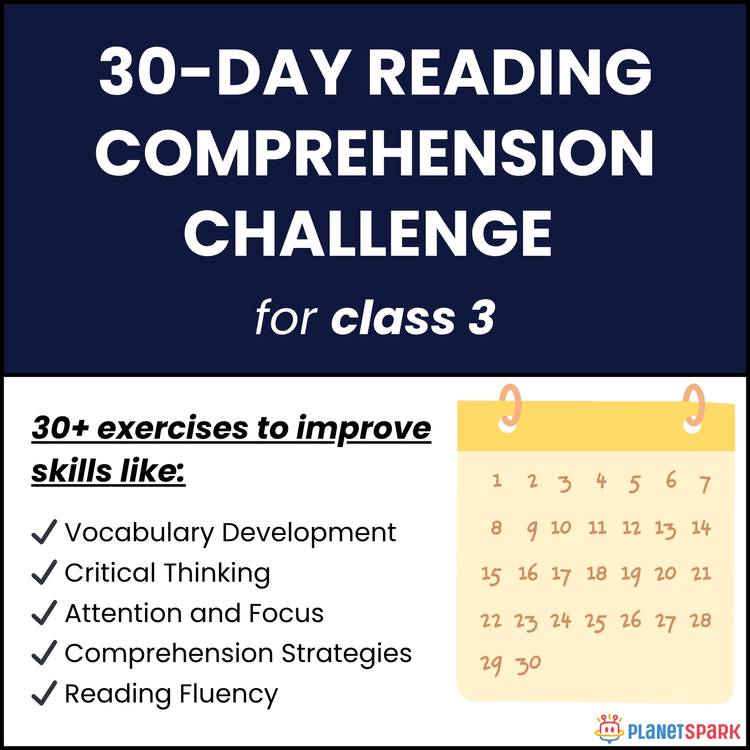The Tale of Melon City Summary | Question Answer, Theme, and More

Table of Contents
- The Tale of Melon City Summary
- The Tale of Melon City Question Answer
- About the Author – Vikram Seth
- Themes of ‘The Tale of Melon City’
- Poetic Devices in ‘The Tale of Melon City’
- Symbolism in ‘The Tale of Melon City’
- Key Takeaways from ‘The Tale of Melon City’
- Why Choose PlanetSpark for English Learning
- Conclusion - The Tale of Melon City Summary
- FAQs - The Tale of Melon City Summary
The Tale of Melon City by Vikram Seth is a humorous poem that satirizes blind obedience, strict justice, and absurd traditions. It tells the story of a strict King and the unusual crowning of a melon as ruler, highlighting the ironies of governance and human behavior.
In this blog, we provide a stanza-wise summary and a question-and-answer guide to help students easily understand and revise the poem. This makes it perfect for exam preparation for the tale of melon city summary and the tale of melon city question answer.
The Tale of Melon City Summary
Stanza 1
Text:
In the city of which I sing
There was a just and placid King.
The King proclaimed an arch should be
Constructed, that triumphally
Would span the major thoroughfare
To edify spectators there.
Summary:
The poem begins by introducing a city ruled by a just and calm King. The King orders the construction of a grand arch over the main street so that people could admire it. This shows the King’s desire to demonstrate justice and grandeur.
Book a Free Demo Class
Understand poems like The Tale of Melon City with expert guidance.
Stanza 2
Text:
The workmen went and built the thing.
They did so since he was the King.
The King rode down the thoroughfare
To edify spectators there.
Under the arch he lost his crown.
The arch was built too low. A frown
Appeared upon his placid face.
The King said, ‘This is a disgrace.
The chief of builders will be hanged.’
Summary:
The workmen obey the King’s orders and construct the arch. When the King rides under it, he loses his crown because the arch is too low. Angry, he declares that the chief builder must be hanged, highlighting the King’s extreme and blind commitment to justice.
Stanza 3
Text:
The rope and gallows were arranged.
The chief of builders was led out.
He passed the King. He gave a shout,
‘O King, it was the workmen’s fault’
‘Oh!’ said the King, and called a halt.
Summary:
As the chief builder is about to be hanged, he claims that the workmen were responsible, not him. The King pauses, showing a moment of confusion but still struggles to deliver fair justice.

Stanza 4
Text:
He could not walk and could not see,
So old (and therefore wise) was he —
But in a quavering voice he said,
‘The culprit must be punished.
Truly, the arch it was that banged
The crown off, and it must be hanged’.
Summary:
The King, now old and physically weak, stubbornly insists that someone must be punished, even humorously suggesting that the arch itself is guilty. This highlights the absurdity of rigid law without reasoning.
Stanza 5
Text:
To the scaffold the arch was led
When suddenly a Councillor said —
‘How can we hang so shamefully
What touched your head, Your Majesty?’
Summary:
A Councillor intervenes, pointing out that it would be wrong to punish the arch, as it had touched the King’s head. This shows that some common sense exists among the ministers, though it is limited by the King’s extreme rules.
Stanza 6
Text:
‘True,’ mused the King. By now the crowd,
Restless, was muttering aloud.
The King perceived their mood and trembled
And said to all who were assembled —
‘Let us postpone consideration
Of finer points like guilt. The nation
Wants a hanging. Hanged must be
Someone, and that immediately.’
Summary:
Feeling public pressure, the King declares that someone must be hanged immediately, ignoring logic and guilt. This stanza humorously critiques mob pressure and authoritarian decisions.
Start Learning with a Free Demo
Experience interactive lessons tailored for Class 11 students.
Stanza 7
Text:
The noose was set up somewhat high.
Each man was measured by and by.
But only one man was so tall
He fitted. One man. That was all.
He was the King. His Majesty
Was therefore hanged by Royal Decree.
Summary:
Ironically, the King himself ends up being hanged because only his height fits the noose. This is a satirical twist showing the dangers of extreme adherence to rules and blind justice.
Stanza 8
Text:
Thank Goodness we found someone,’ said
The Ministers, ‘for if instead
We had not, the unruly town
Might well have turned against the Crown.’
Summary:
The ministers rationalize the King’s execution as a solution to satisfy the people, emphasizing practicality over morality.
Stanza 9
Text:
‘Long live the King!’ the Ministers said.
‘Long live the King! The King is dead.’
They pondered the dilemma; then,
Being practical-minded men,
Sent out the heralds to proclaim
(In His [former] Majesty’s name):
‘The next to pass the City Gate
Will choose the ruler of our state,
As is our custom. This will be
Enforced with due ceremony.’
Summary:
After the King’s death, the ministers announce that the next person to enter the city will select the new ruler, following the city’s customs.
Stanza 10
Text:
A man passed by the City Gate.
An idiot. The guards cried, ‘Wait!
Who is to be the King? Decide!’
‘A melon,’ the idiot replied.
This was his standard answer to
All questions. (He liked melons.)
‘You are now our King,’ the Ministers said,
Crowning a melon.
Summary:
An idiot enters the city and whimsically chooses a melon as King, simply because he likes melons. Surprisingly, the ministers accept the suggestion and crown the melon. This highlights the absurdity of customs and governance.
Stanza 11
Text:
Then they led (Carried) the Melon to the throne
And reverently set it down.
This happened years and years ago.
When now you ask the people, ‘So —
Your King appears to be a melon.
How did this happen?’, they say, ‘Well, on
Account of customary choice.
If His Majesty rejoice
In being a melon, that’s OK
With us, for who are we to say
What he should be as long as he
Leaves us in Peace and Liberty?’
The principles of laissez faire
Seem to be well-established there.
Summary:
The citizens accept the melon as their King, as long as it maintains peace and liberty. This ending humorously critiques blind adherence to tradition and satirizes governance based on custom rather than wisdom.

The Tale of Melon City Question Answer
1. Narrate ‘The Tale of Melon City’ in your own words.
The poem tells the story of a city ruled by a very just and placid King. One day, an arch was built too low, causing the King to lose his crown. Following strict justice, he decided to punish someone, which eventually led to his own hanging. After his death, a man passing by the city gates—a simpleton who liked melons—was crowned as the new ruler. Surprisingly, the people accepted a melon as their King, as long as it allowed them peace and liberty. The poem humorously shows the absurdity of blind rules and customs.
2. What impression would you form of a state where the King was ‘just and placid’?
A state ruled by a just and placid King might seem fair and peaceful at first. However, extreme adherence to rules without practicality, as shown in the poem, can lead to absurd and dangerous situations. Justice without reason can create confusion and unrest.
3. How, according to you, can peace and liberty be maintained in a state?
Peace and liberty can be maintained by balancing justice with wisdom and understanding. Rulers should respect the law while considering the people’s needs. Blind obedience or rigid rules, as in the poem, may result in chaos or unnecessary suffering.
4. Suggest a few instances in the poem which highlight humour and irony.
The King punishing the arch that caused him to lose his crown, instead of the builders.
The people accepting a melon as their King because it followed customs, showing blind tradition.
The Ministers proclaiming “Long live the King!” even after he is dead, reflecting the absurdity of formalities.
5. ‘The Tale of Melon City’ has been narrated in a verse form. This is a unique style which lends extra charm to an ancient tale. Find similar examples in your language. Share them in the class.
Many folk tales, moral stories, and humorous poems are written in verse to make them memorable and engaging. Examples include nursery rhymes, Aesop’s fables in poetic form, or classical epics like Ramayana in verse.
About the Author – Vikram Seth

Vikram Seth is a renowned Indian poet, novelist, and librettist, known for his versatility in writing both poetry and prose. Born in 1952, Seth has explored themes ranging from love and humour to social commentary. His poems, including The Tale of Melon City, often use satire and wit to deliver meaningful messages, making them both entertaining and thought-provoking. Seth’s mastery of verse allows him to narrate even ancient tales with charm, humour, and clarity, engaging readers of all ages.
Reserve Your Free Demo !
Boost your comprehension and literary skills with PlanetSpark.
Themes of ‘The Tale of Melon City’
1. Satire on Blind Obedience and Authority
The poem humorously critiques how blind obedience to rules and authority can lead to absurd and ridiculous outcomes. The citizens’ unquestioning acceptance of punishing the arch and then crowning a melon highlights the folly of following rules without reasoning.
2. Justice and Its Misapplication
Through the King’s extreme sense of justice, the poem shows how rigid application of law can cause harm rather than maintain order. It underlines the need for wisdom, fairness, and practicality in governance.
3. Humour and Irony as Social Commentary
The poem uses irony and humour to deliver social critique. Events like the King being hanged by Royal Decree and a melon becoming King are exaggerated situations that make readers laugh while also prompting reflection on societal norms.
4. Freedom and Tolerance
By the end of the poem, the citizens accept the melon as King as long as it does not disturb their peace. This reflects the theme of freedom, tolerance, and the importance of individual liberty in a society.
Poetic Devices in ‘The Tale of Melon City’
1. Satire
The poem uses satire to criticize blind obedience, extreme justice, and foolish governance. The absurdity of crowning a melon and hanging the King highlights the social follies in a humorous way.
2. Irony
Irony runs throughout the poem. Examples include the King being hanged by his own decree and the citizens accepting a melon as their ruler. These situations create a humorous contrast between expectation and reality.
3. Hyperbole
Exaggeration is used to make the poem amusing and impactful. The extreme punishment for a trivial mistake and the absurd choice of a melon as King are clear examples of hyperbole.
4. Verse Narrative
The poem is written in a rhyming, rhythmic style, which makes the story engaging and easy to remember, giving an ancient tale a fresh, lyrical charm.
5. Personification
The melon, crowned as King, is given human-like significance, illustrating how ridiculous situations can reflect real societal issues.
6. Repetition
Repetition emphasizes absurdity and humor, such as the repeated description of the King losing his crown under the low arch, enhancing the comic effect.
Symbolism in ‘The Tale of Melon City’
1. The King
The “just and placid” King symbolizes rulers who follow rules blindly without practical wisdom. His extreme sense of justice highlights how rigidity can lead to chaos.
2. The Low Arch
The arch under which the King loses his crown represents the minor mistakes or obstacles in governance that, if handled inflexibly, can lead to disproportionate consequences.
3. The Melon
The melon symbolizes absurdity and the arbitrary nature of power. Crowning a melon as King reflects society’s blind acceptance of authority as long as peace and liberty are maintained.
4. The Ministers
The ministers symbolize practicality and compromise. They adapt to absurd circumstances to maintain order, showing that governance often requires flexibility and common sense.
5. Hanging and Punishment
The extreme punishments symbolize the dangers of strict, literal-minded rule and the folly of prioritizing procedure over rational judgment.
Key Takeaways from ‘The Tale of Melon City’
Blind adherence to rules without practical wisdom can lead to absurd and disastrous consequences.
Humor and irony are powerful tools to convey social and political commentary.
Flexibility and common sense are essential in governance and decision-making.
Society often tolerates absurdity in leadership as long as peace and liberty are preserved.
The poem highlights the importance of balancing justice with reason and rationality.

Why Choose PlanetSpark for English Learning
The Tale of Melon City teaches important lessons in reasoning, satire, and understanding societal norms. At PlanetSpark, we help children explore such literary works deeply while improving their language skills and critical thinking.
Personalized Learning: Our expert educators provide tailored lessons to strengthen reading, comprehension, and creative expression in students.
Interactive Sessions: Engaging online classes ensure students actively participate, discuss, and interpret stories, poems, and plays effectively.
Practical Application: Students learn to analyze texts, answer questions confidently, and express ideas clearly, skills that go beyond the classroom.
Critical Thinking Development: Through discussion and interpretation, children enhance their reasoning skills and learn to form their own opinions about literature and society.
Confidence in Communication: Regular participation in reading and recitation activities helps students articulate their thoughts clearly and confidently, both in writing and orally.
With PlanetSpark, children don’t just read literature they understand, interpret, and enjoy it.
Conclusion - The Tale of Melon City Summary
The Tale of Melon City is a humorous and satirical poem that teaches valuable lessons about governance, justice, and societal norms. Through its witty narrative and playful exaggeration, it encourages readers to think critically about authority and tradition while enjoying the charm of poetic storytelling. Understanding this poem helps students not only grasp literary techniques but also develop analytical and interpretative skills essential for exams and beyond. With guidance from PlanetSpark, children can explore such works deeply, improving comprehension, critical thinking, and confidence in expressing ideas.
FAQs - The Tale of Melon City Summary
1. What is the main idea of The Tale of Melon City?
The poem humorously depicts a city where the people blindly follow rules, and eventually, a melon becomes king, highlighting the absurdity of blind obedience and the importance of reason and liberty.
2. Who wrote The Tale of Melon City?
The poem was adapted from Idries Shah’s collection, and the version studied in schools is often included in Vikram Seth’s Collected Poems.
3. Why is the poem considered humorous and satirical?
It exaggerates situations, such as the King being hanged and a melon becoming king, to poke fun at blind conformity, rigid justice, and bureaucratic absurdities.
4. What literary devices are used in the poem?
The poem uses satire, irony, rhyme, repetition, and personification to make the story engaging and meaningful.
5. How can students prepare for questions on this poem?
Students should summarize stanza-wise, understand the plot and characters, identify humor and satire, and practice answering questions like The Tale of Melon City question answer for exam readiness.
Download Free Worksheets
Personalized Communication Report
Record a video to get a AI generated personalized communication report for your child

Hi There, want to try these
tips for your child with
LIVE with our expert coach?
Let's check your child's
English fluency

